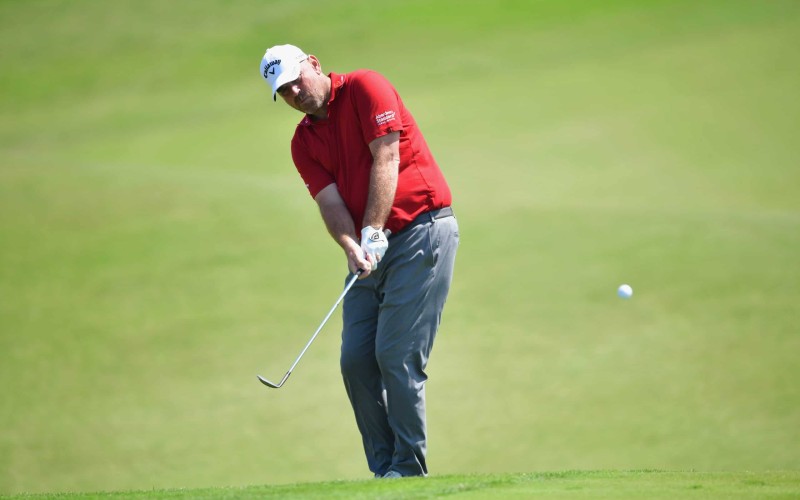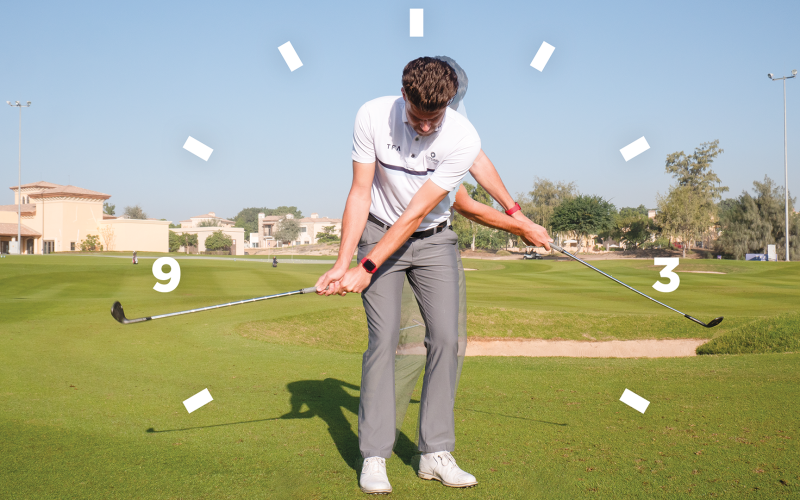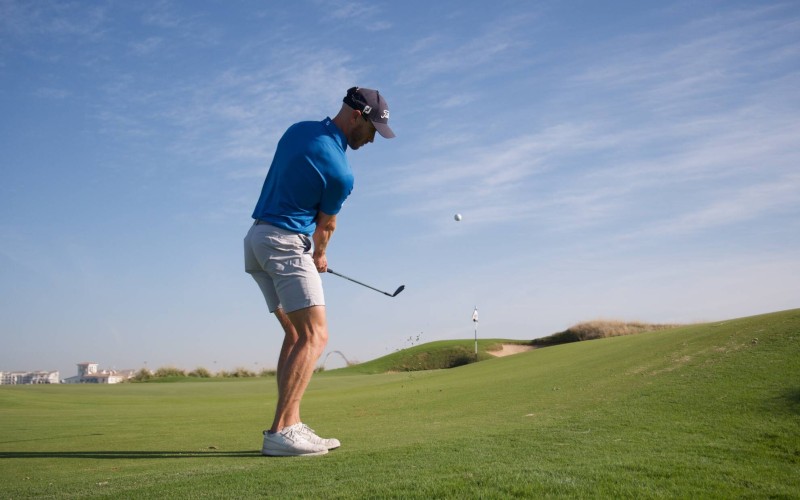The Chip-Putt shot is a simple and effective way to get the ball up and down from around the green on these especially large green complexes we are blessed to have in the UAE. We all have a clear understanding of the putting stroke and how to execute it. The Chip Putt runs parallel to that, the only difference is which iron we choose to execute the shot. Allow me to walk you through the Chip-Putt – a shot that will no doubt help lower your scores.

Grip
THE first thing we are going to do is adopt the putting grip we use. In the image you will see that I get the grip running in the lifelines of my palms (as shown by the blue arrows). I also feel that my left hand rotates counter clockwise and my right hand rotates clockwise. This will limit the amount of wrist action in this shot. I’m trying my best to keep my hands passive, much like my putting stroke. The last three fingers of my left hand (yellow circle) apply the most pressure in my grip, the left forefinger (green arrow) runs down the side, exactly as in my normal putting grip. As I’ve said, this grip limits the wrist action and, like putting, we want our core and torso to control this action.
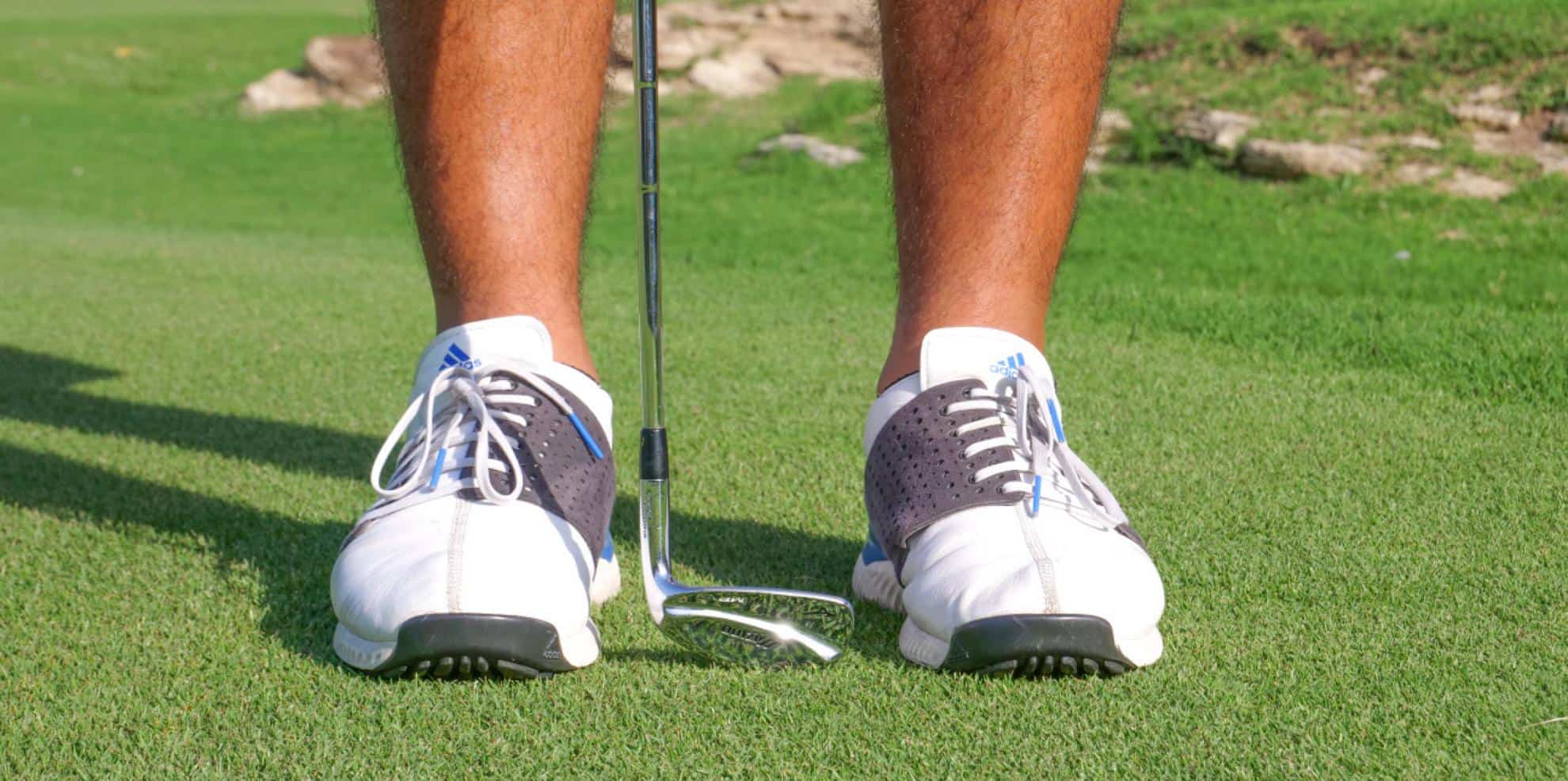
Stance
In the image above you can see my stance width is quite narrow – about a clubhead width apart. This is comfortable for me. It allows me to have a soft, relaxed feel in my feet and keeps my knees soft and responsive.
Set up

In the image to the right you can see my set up from face on. The yellow arrows allude to what I mentioned earlier of rotating my left hand counter clockwise and my right hand clockwise. This gets my elbows nice and tucked inward (yellow arrows) where they are connected to my ribs, which really helps me stay connected through the shot and allows the core/torso to control the shot. The last three fingers on my left hand apply the most pressure (as illustrated by the green circle). The weight is favouring my left foot (red arrow) at a ratio of 60% to 40%.
In this image you will notice that I have my sternum ahead of the ball (red line). This will ensure that the low point in my swing (i.e. where the clubhead interacts with the turf) will be ahead of the ball. My ball is positioned back of centre (green line) and is closer to my right instep. My shaft (yellow line) has a nice amount of forward lean (i.e. the shaft is moved towards the target). My elbows are tucked in and lightly touching my ribs (yellow line).
This set up will help promote a nice crisp descending blow which will really help your chipping.
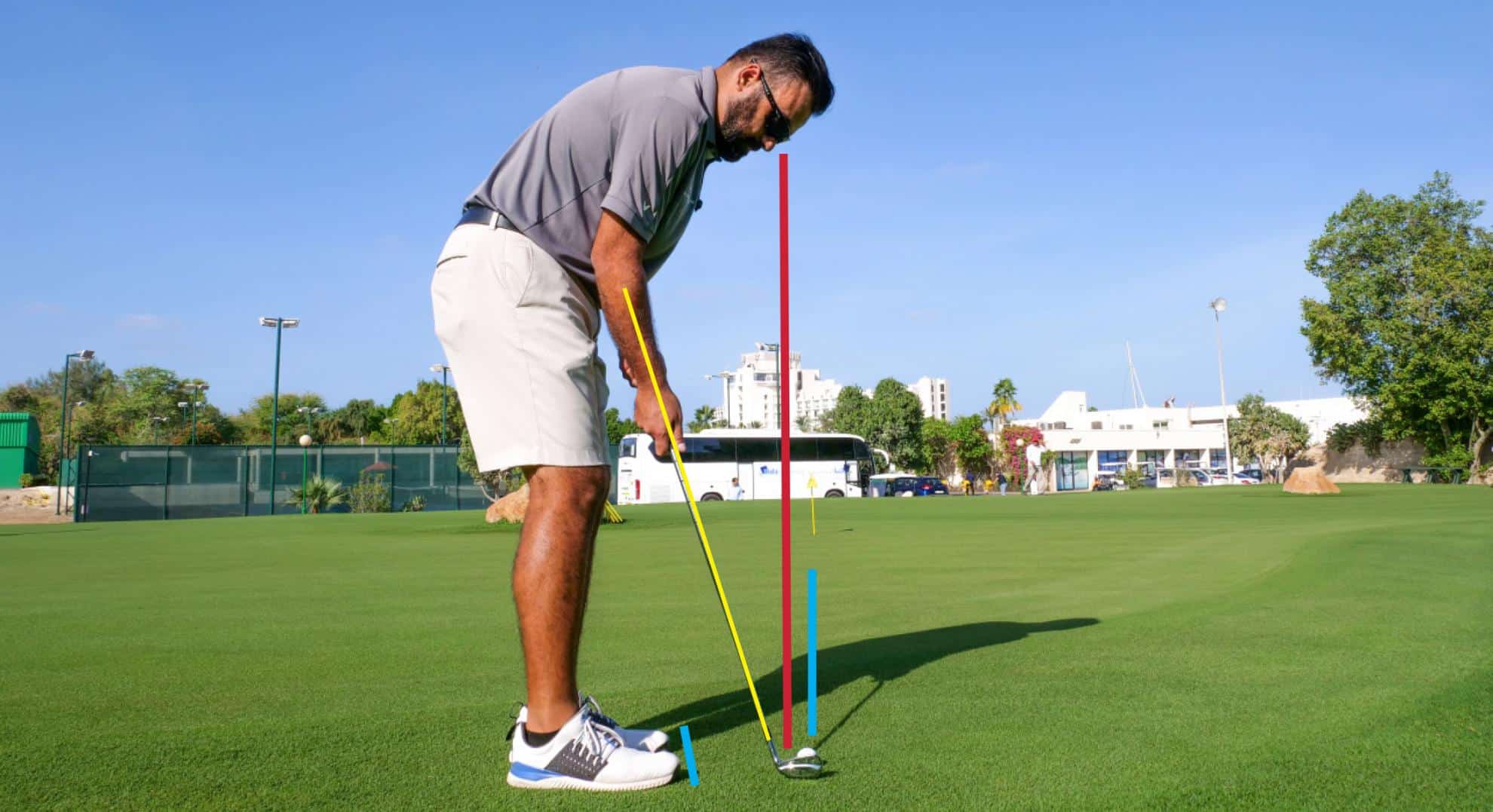
The image to the right outlines my set up from down the line. Here you can see how much over the ball I am. If we superimposed my putting posture you would see no difference. My eyeline (red line) is a touch inside the ball, the shaft is hidden in my right forearm (yellow line), much like with the putter, my forearm and shaft make a solid line. The clubface is aligned at the target (blue line) and my toe line is open (runs a touch left) to my ball target line (also blue line).
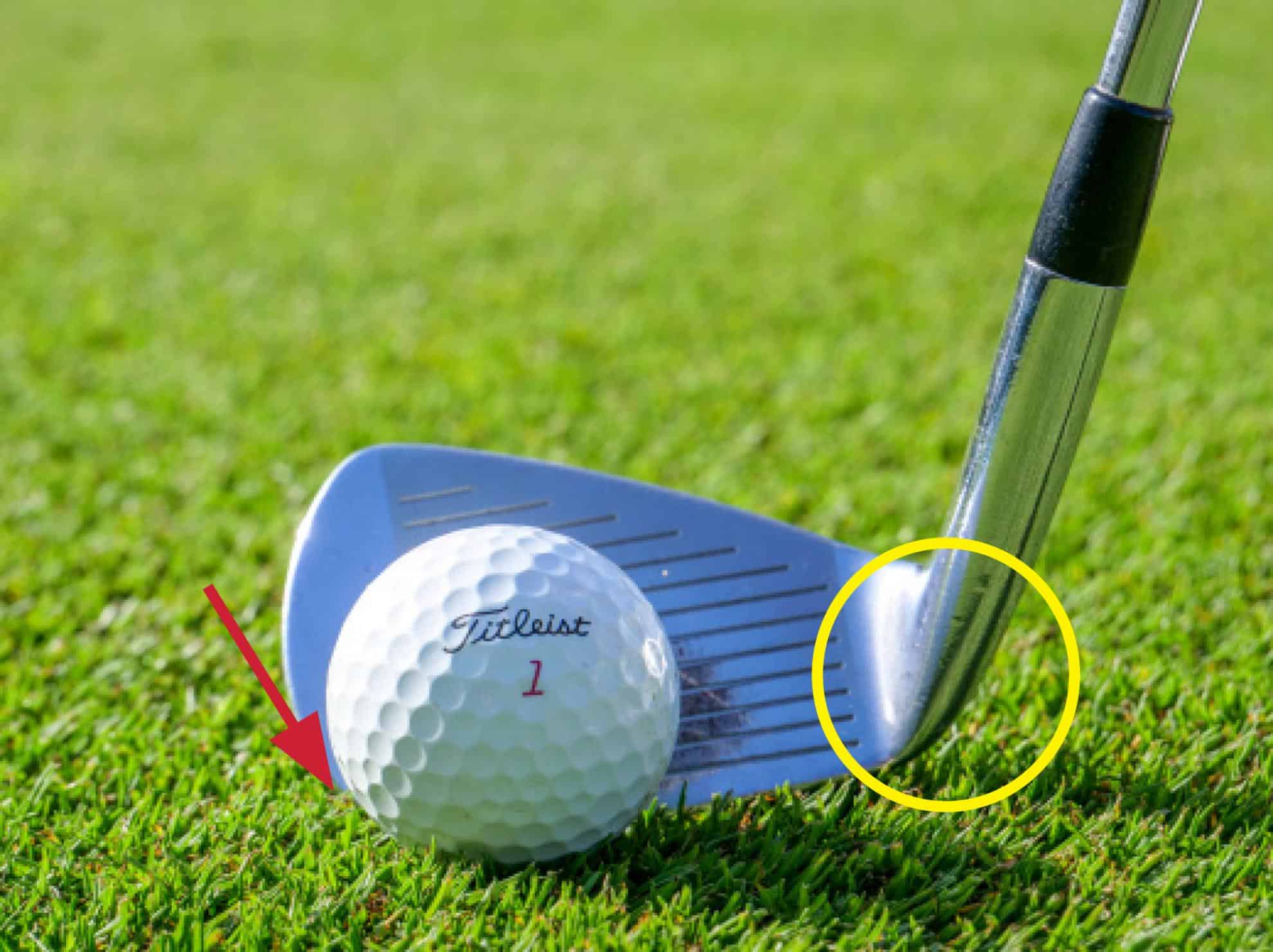
Strike with the toe
Now with me being so close to the ball you must wonder how do we position the ball in relation to the clubface? The answer is in this image. I want the ball set up on the toe of the clubhead (red arrow) and the heel of the club up on the top of the turf (yellow circle). This is very important as the toe will glide through the turf and will negate any effect the heel may have in the shot – our clubface stays square to the target line better. If the heel were down then the heel will cause the clubface to close (twist left). The other important reason for setting and hitting the ball from the toe is that it’s a dull part of the club, so you will always get the same “dead” flight with roll, sometimes when we strike a ball from the sweet spot we get a hot flight – i.e. the ball comes off really fast, so this helps to take care of that.
Backswing
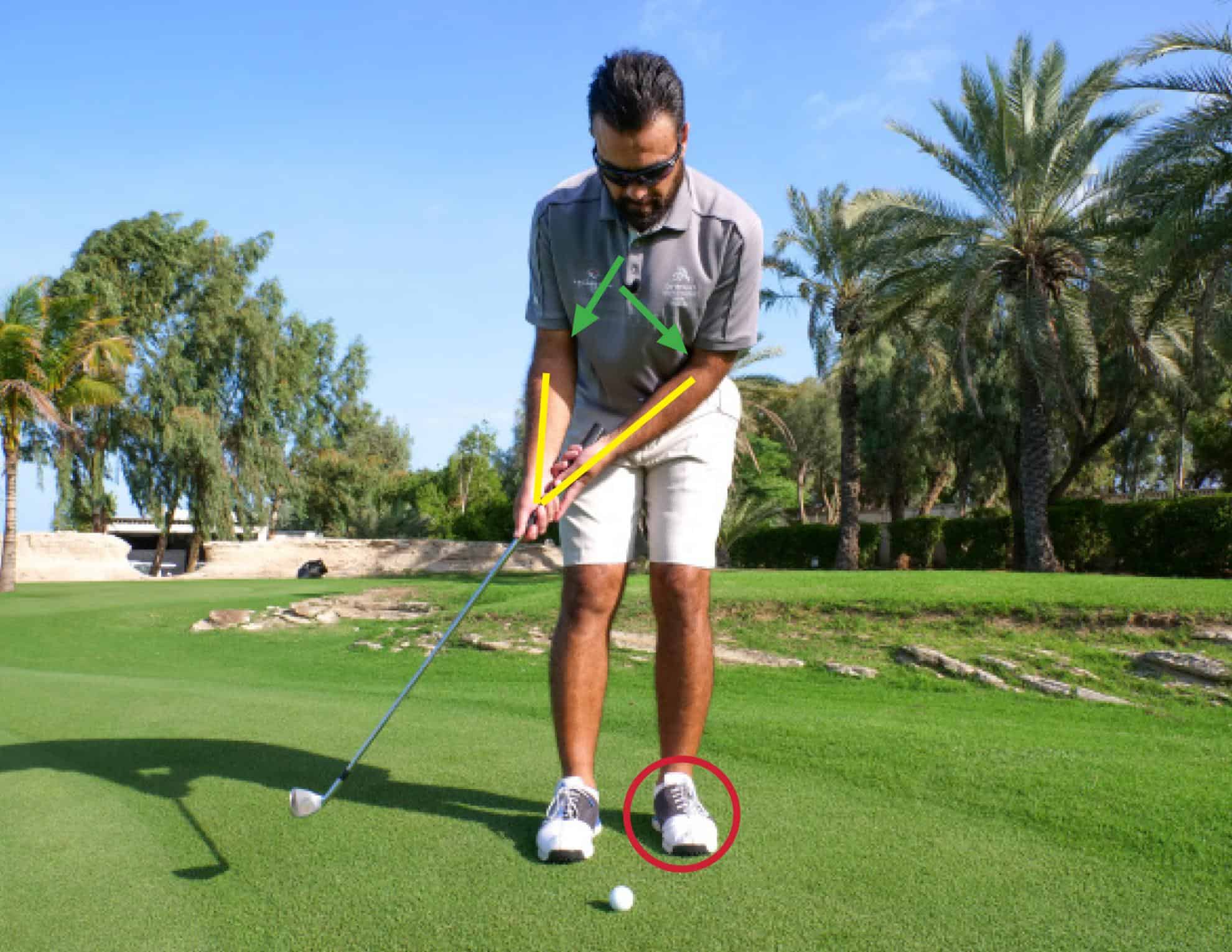
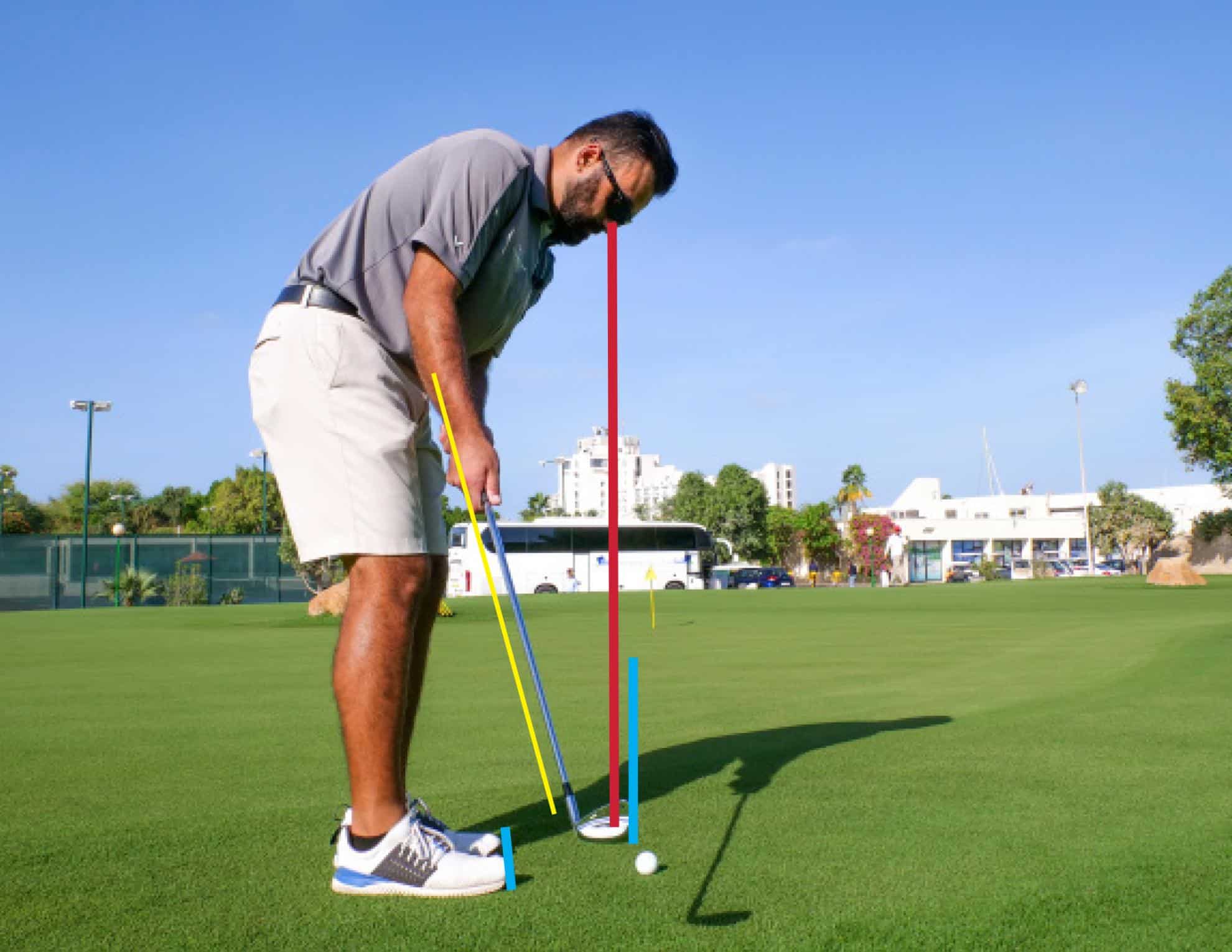
Impact
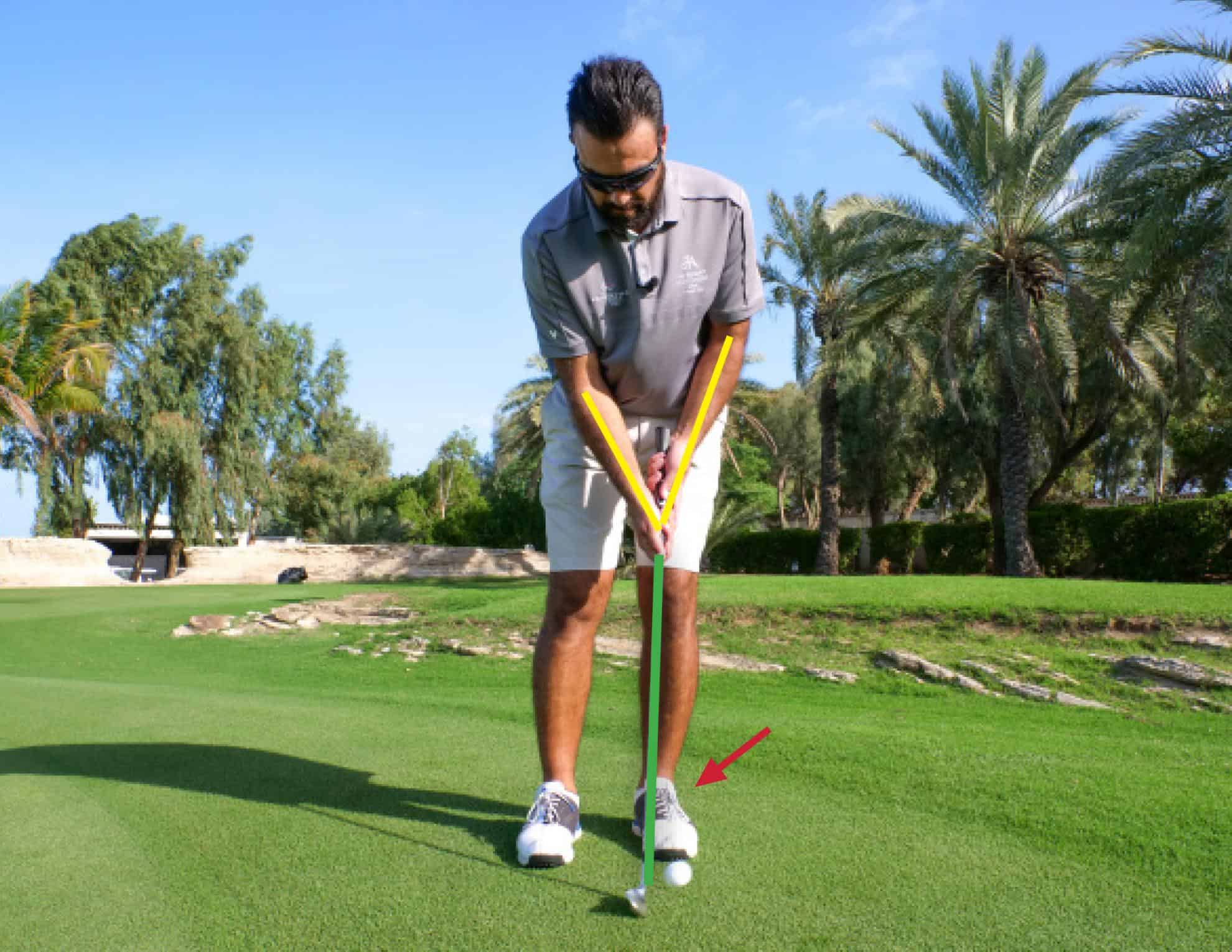
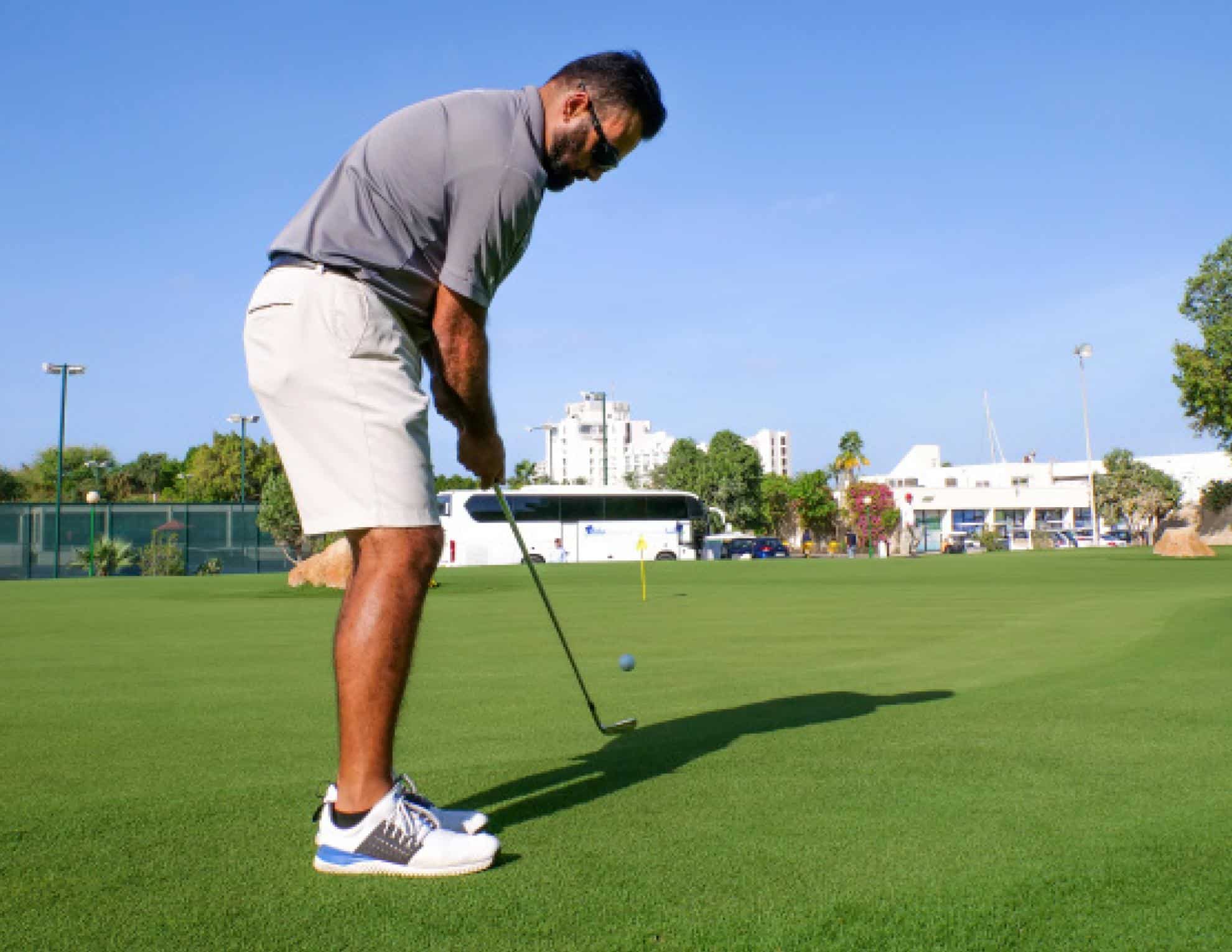
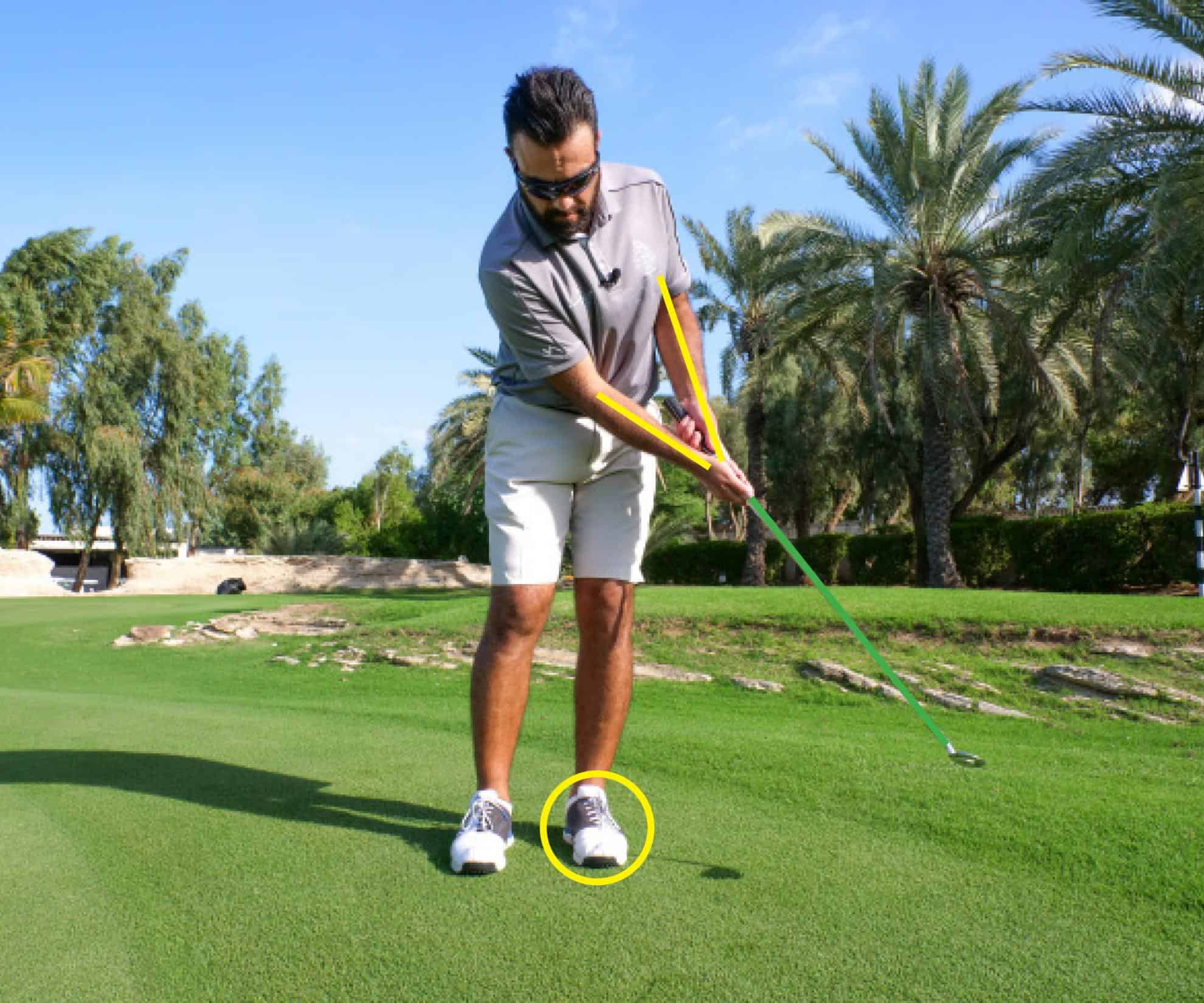
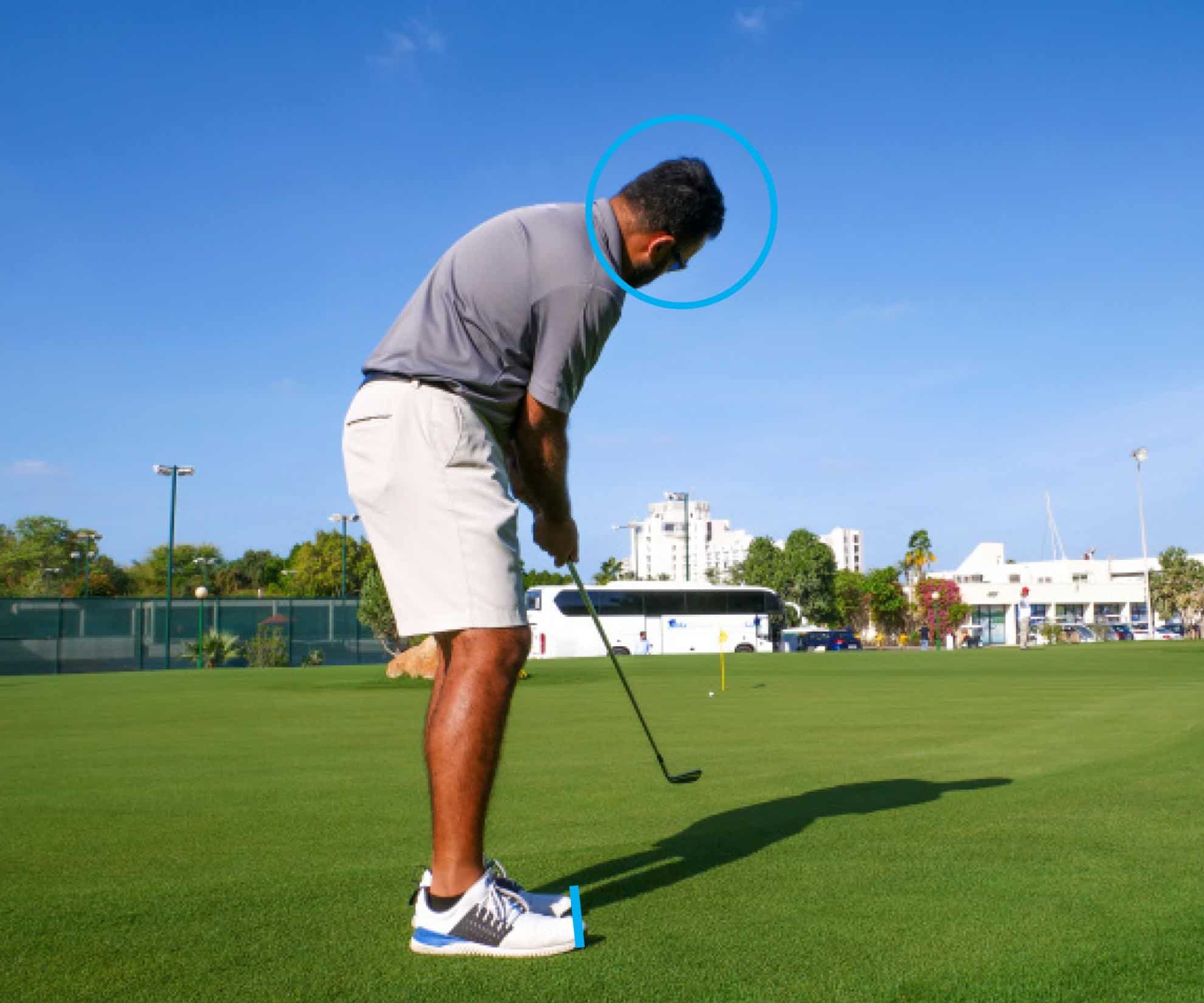
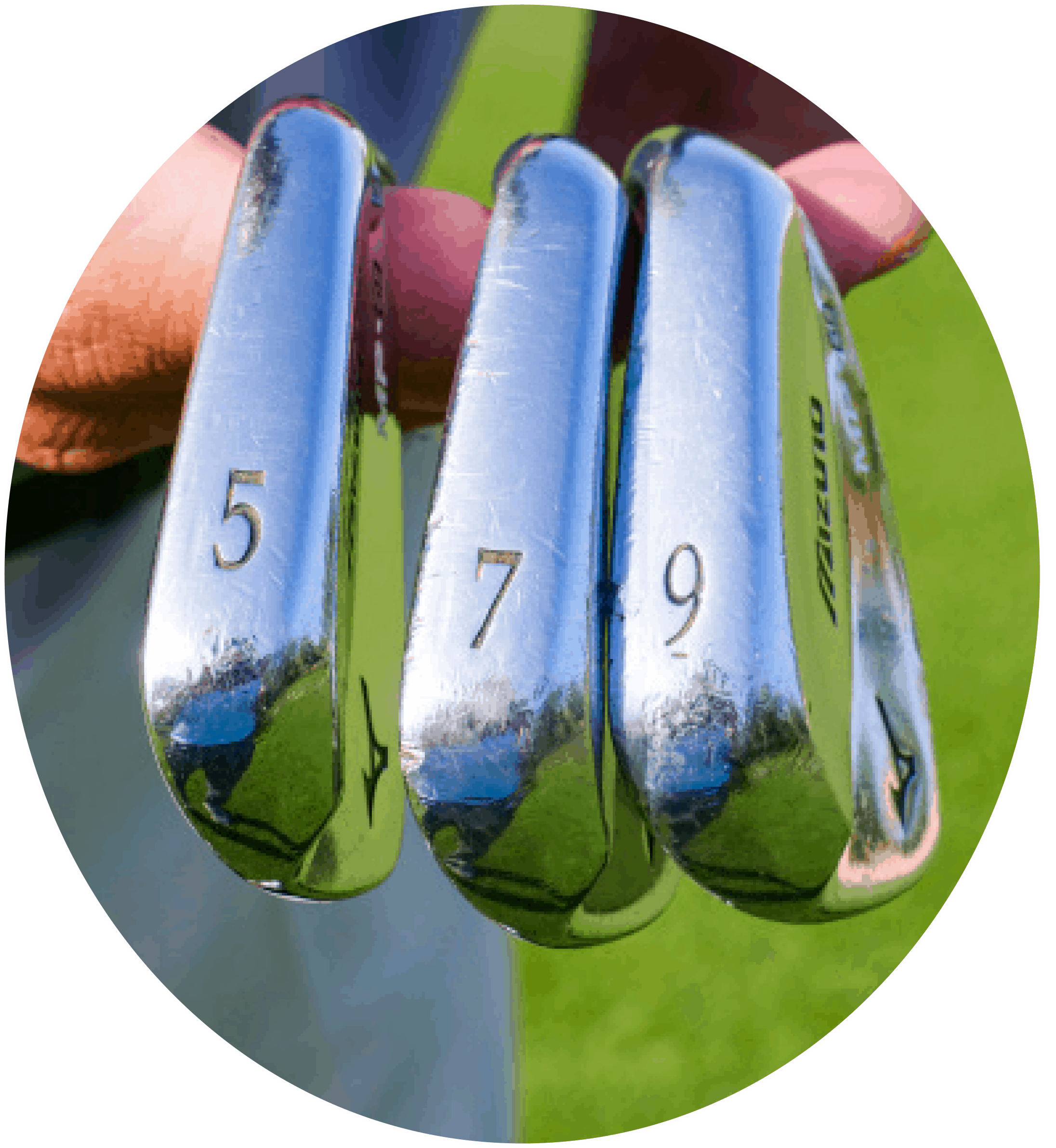 As a final point, when I play this shot my length of swing would represent the same swing I would have when trying to hit a 20 foot putt. I merely change my clubs to hit the different distances I require – 9 iron for a pin that’s about 18 paces from me (on a flat green running at 10 on the stimp meter) 7 iron for a pin that’s 30 paces from me and 5 iron to a pin that’s 42 paces from me.
As a final point, when I play this shot my length of swing would represent the same swing I would have when trying to hit a 20 foot putt. I merely change my clubs to hit the different distances I require – 9 iron for a pin that’s about 18 paces from me (on a flat green running at 10 on the stimp meter) 7 iron for a pin that’s 30 paces from me and 5 iron to a pin that’s 42 paces from me.
Water bottle drill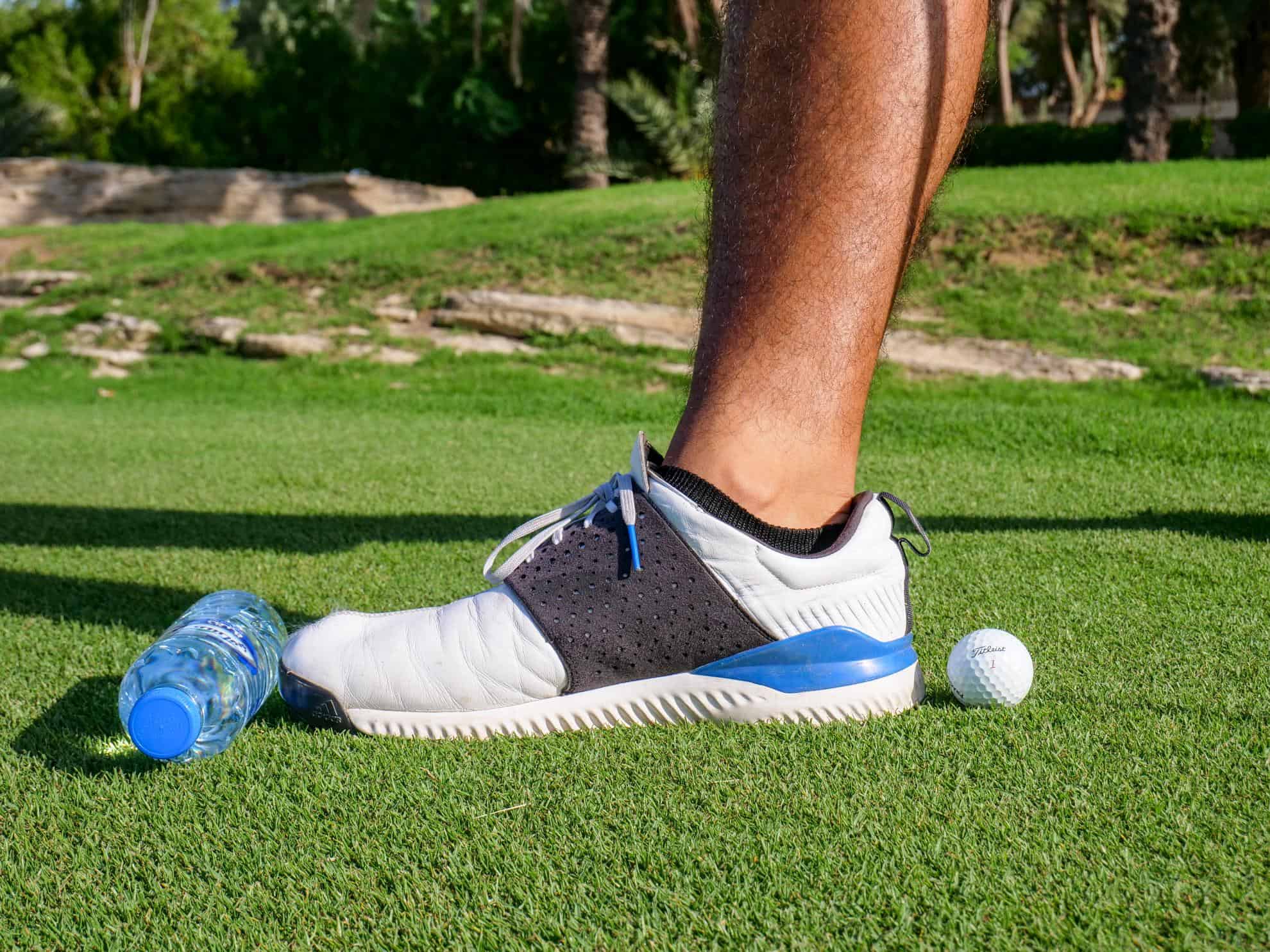
To help you with your practice I recommend that you use a plastic water bottle to help you get started. Now the set up is the same as we have discussed. The purpose of the bottle is to get the clubhead working more vertically on the way back without you using your arms to lift the club up. The clubhead will move up as a consequence of a correct set-up and action. Set the bottle approximately 12 inches behind the ball.
From here you just need to take the set-up and start making your swings, this will accelerate your understanding and getting you playing the shot like a pro.
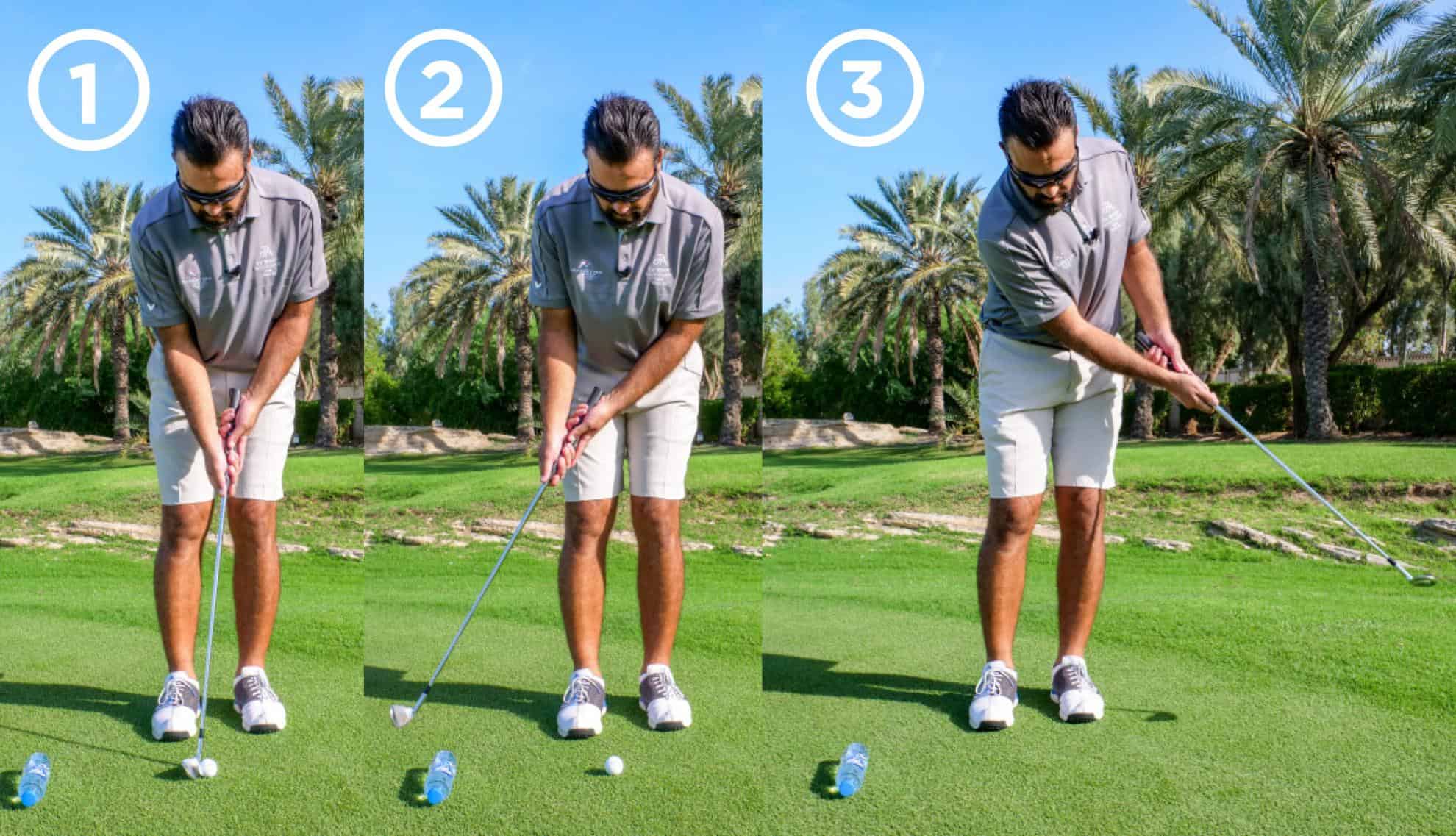
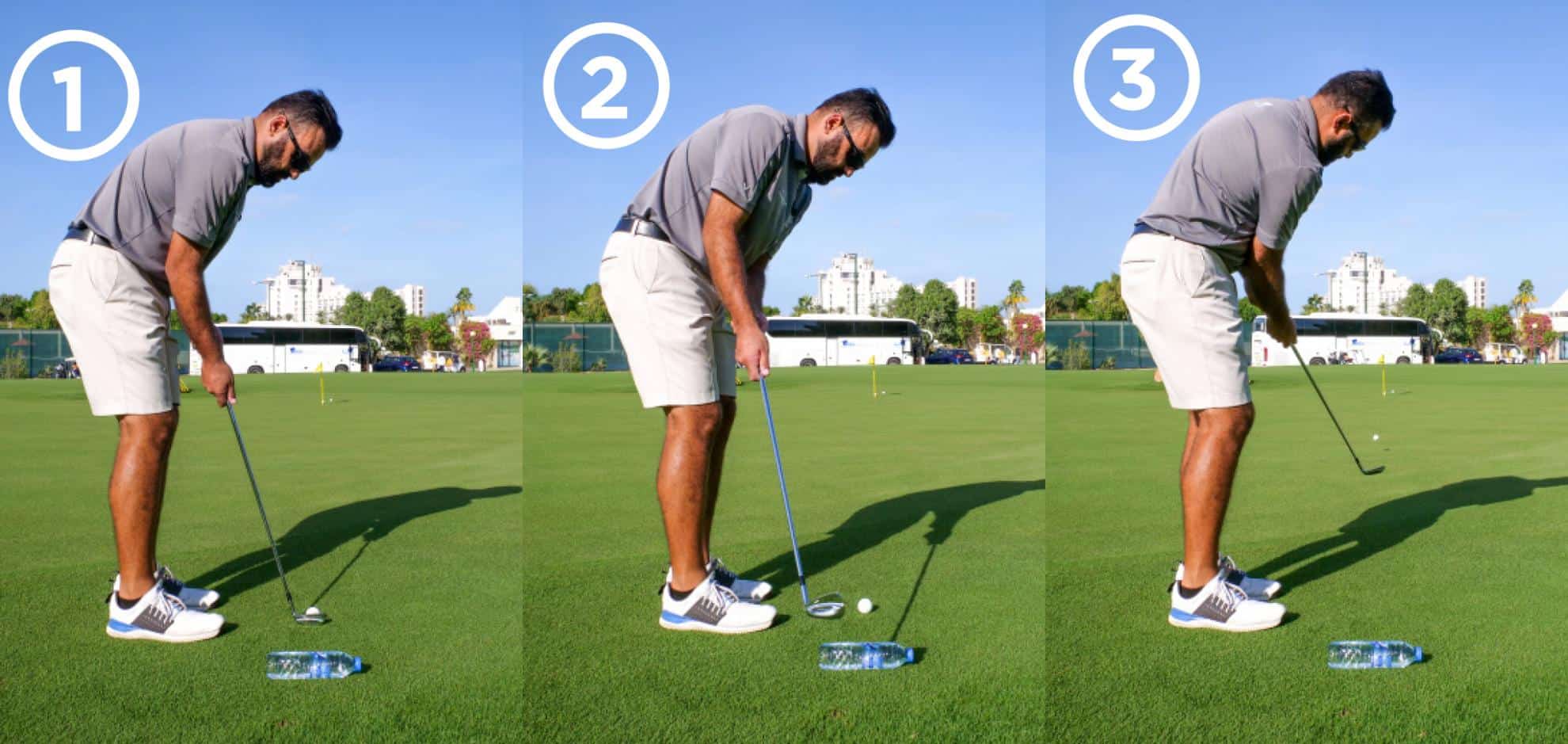
I wish you all the best of luck and I hope that in 2020 the chip-putt will help in your quest to become a better golfer and enhance your enjoyment of this beautiful game.


